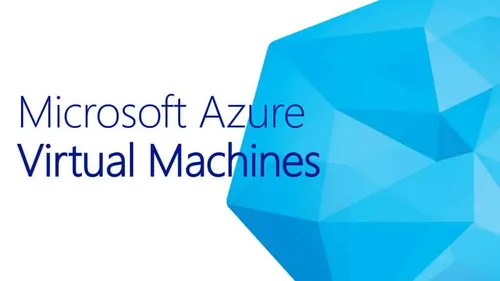
Knowledge base
December 28, 2022
Virtual Microsoft Azure machine
It is a computer file known as an image that works just like a real computer. Windows, Linux and other operating systems can all run it.
What is a virtual machine?
It is a computer file known as an image that works just like a real computer. One of the folders that contains everything is that one. Windows, Linux and other operating systems can all run it. As a result, you have the flexibility to run multiple machines on one physical computer. In addition, different operating systems are possible for different systems.
The virtual hardware provided by each of these virtual machines includes CPUs, RAM, hard drives, network connections and other similar components.
What is Azure Virtual Machine?
Creating your own instances is one of the services azure offers.
It has a variety of uses:
- Development and test
- Applications in the Cloud
- Comprehensive data center
It is important to keep in mind that you must pay for compute time when using Azure by the minute.
Their size, operating system and any installed licensed applications all play a role in their price.
It is recommended to set the status to Stopped when not in use to avoid corresponding charges (Assigned).
With Microsoft Azure, you can receive general purpose, general purpose, compute-optimized, memory-optimized and burstable virtual machines. This service is much more attractive to businesses because of the cost per second. These are some applications for Azure Virtual Machines:
Development and test
Creating machines with the fundamental and specialized configurations needed to code and test applications is quick and easy.
Applications in the Cloud
If necessary, one can purchase more virtual machines and disable them when not needed.
Comprehensive data center
The company’s network can be quickly connected to VMs in the Azure Virtual Network.
Workloads for an Azure virtual machine
There are two ways you can switch to an Azure virtual machine. You will discover these two crucial approaches to transitioning to an Azure VM in this self-study on building Azure Virtual Machines.
- Suitable workloads
- Inappropriate workloads
Suitable workloads
It’s nothing but highly available service workloads, like Internet stores for sale.
It can also be used for recurring tasks such as:
- Marketing campaigns that are seasonal on an organization’s website.
- Annual sales during holidays.
For unpredictable workloads, such as those at startups where they are unaware of their expansion.
Organizations that just want to move their infrastructure to the cloud can also use it.
Inappropriate workloads
It’s not appropriate to move your applications to the cloud if you don’t notice a cost difference.
There are several state or local government laws or ordinances that prohibit moving to the cloud because of their laws.
How do I create an Azure virtual machine?
To create an Azure virtual machine, use one of the following methods:
When building an Azure VM, it all depends on the environment you are working in:
Azure Portal
A virtual machine is created through azure portal. Windows is used as a portal.
Sjablonen
A virtual Windows machine can be set up using the Resource Manager template.
Client disks
Azure Resources can be implemented with C#.
REST APIs
Create a virtual machine or update one.
A virtual network: what is it?
This self-study on Azure virtual networking will help you thoroughly understand Azure. Customers can build and manage virtual private networks in Azure thanks to virtual networks. The primary function of virtual networks is to allow instances to communicate with each other. It is possible to link several virtual networks together. You can connect to your on-premises networks through the Azure virtual network. As a result, Azure serves as a virtual extension of your on-site data center. ICMP and UDP are supported by Azure Virtual Networks.
Insulation
When you build a virtual network, you can separate each of these networks so that they each function separately.
The virtual network can be set up to use your personal DNA servers.
Internet communication
By default, all instances you start in an Azure virtual machine can connect to the Internet. If necessary, you can enable incoming resource access.
Azure Resource Communication
Regardless of whether the resources come from the same subnet or separate subnets, they can communicate with each other via private IP addresses if they are part of the Azure virtual network.
They provide preconfigured routing between subnets, so operating system users of on-premises networks do not have to manage and configure routes.
Connectivity of virtual networks
Resources from any virtual network can communicate with resources from any other virtual network thanks to connectivity.
Are you planning to attend an Azure interview? The most recent Azure interview questions are as follows.
On-premises connectivity
It is possible to connect a virtual network to an on-premises network so that resources can communicate with each other.
Traffic filtering
By source, IP address and port, network traffic from sources in a virtual network can be filtered.
Router
By default, Azure’s routing can be overridden with your own routes or by passing BGP routes through the network gateway.
DHCP in Azure Virtual Network (dynamic host configuration)
IP addresses are assigned by Azure using Dynamic Host Configuration Protocol services from the ranges you specify for the virtual network. The length of each IP address lease is unlimited. You will gain a thorough understanding of dynamic host configuration in the Azure Virtual Network after completing this azure VM building class.
You can configure a static private IP address from the range of Ipv4 addresses connected to the virtual network to prevent IP address changes regardless of the state of the Azure virtual machine.
Virtual Microsoft Azure network: subnet
There are one or more subnets in the Azure virtual network.
Subnets split your virtual network into smaller IP ranges to allow logical separation of resources within each subnet.
Part of the virtual network space is represented by the IP address range that each subnet contains.
Check out our Microsoft Azure training if you want to learn more about cloud architecture!
Routing in the Azure virtual network
It is nothing more than the default routing of your traffic.
A routing table was automatically created for each subnet in the Azure virtual network, and system default router routes were also included. A few system routes can be replaced with custom routes, and you can also add more custom routes to the route database.
Groups for network security
The only thing limiting network traffic at the virtual machine level is the firewall. Based on the source or destination IP addresses, ports and protocols, it provides a list of security rules that allow or prohibit incoming or outgoing network communications.
Security rules are applied to all resources in the subnet when applied to the subnet.
Select the right VM for your workload to save money
Improve operational efficiency by moving your business and mission-critical workloads to azure infrastructure. Use Azure virtual machines to run SQL Server, SAP, Oracle and high-performance computing applications. Windows Server or your preferred Linux distribution. Deploy virtual machines with 12 TB of memory and up to 416 vCPUs. Get each VM up to 3.7 million IOPS of local storage. Benefit from the first cloud deployment of 200 Gbps InfiniBand and up to 30 Gbps Ethernet. Choose the underlying processors AMD, Ampere (Arm-based) or Intel that best meet your needs.
Improve your system and save money
With term pricing on Azure Reserved Virtual Machine Instances, you can save up to 72% on pay-per-use costs. Use Azure Hybrid Benefit and reserved instances to run Windows Server VMs on Azure with your on-premises licenses and save up to 80%. Use Azure VMs and scale sets at bargain prices to run interruptible applications with significant savings over pay-per-use costs. Use Azure Cost Management to maximize your cloud spending. When you switch to Azure, you will receive three additional years of extended security updates for Windows Server 2012 and 2012 R2.
Discover the latest features of Azure Compute
Scalable applications can be created using scale sets for virtual machines. With Azure Spot Virtual Machines and reserved instances, you can reduce your cloud expenses. Create your own private cloud with Azure Dedicated Host. To improve tolerance, run mission-critical programs in Azure.
Manage, monitor and back up your virtual machine environments
With Azure Blueprints, you can quickly move apps from development to production across your enterprise. With Azure Advisor, you may receive suggestions on high availability, security, performance and cost for all your VMs. Secure your data against ransomware with Azure Backup. Use Azure Monitor to proactively discover issues and receive insightful knowledge. With on-demand capacity reservations, you reserve computing resources in advance of VM deployments.
Adopt reliable hybrid cloud technologies
Use Azure virtual machines to increase your data center capacity and access cloud-based, on-demand high-performance computing resources. Consistently create, test, deploy and manage hybrid cloud applications in Azure and you’re on-premises environment. To prevent business interruptions, use easy-to-use, affordable cloud backup and disaster recovery options. By creating Azure and deploying on-premises with Azure Stack, you can also meet regulatory and policy requirements for your virtual machines.
Scale your system without introducing more complexity
Virtual Machine Scale Sets allow you to set up maximally available, centrally managed and scalable services for computationally demanding big data and container applications. Ephemeral OS disks allow you to create a new image of your virtual machines for less money and faster for stateless applications. Shared photo galleries allow you to manage mass global replication and photo sharing. If you want to reduce boot and installation times, use second-generation virtual machines. VMs with GPUs can give you massive computing power for your artificial intelligence (AI) and remote visualization tasks.
Improve compliance and security
With a reliable launch, you can protect your virtual machines (VMs) from malware in kernel and user mode. Use secret azure computing to protect your VM data while it is running. With Azure Security Center, you can monitor your workloads and detect and fix problems. meet a wide range of global and industry-specific compliance requirements, such as the General Data Protection Regulation (GDPR), ISO 27001, HIPAA, FedRAMP and SOC 2. Install your Azure virtual machines on an exclusive physical server for your business, an Azure Dedicated Host. Take advantage of a variety of VM Service Level Agreements (SLAs), ranging from single-copy VMs at 99.9 percent to VMs deployed in two or more Azure Availability Zones at 99.99 percent.
Source: dzone
Want to know more?

Related
blogs
Tech Updates: Microsoft 365, Azure, Cybersecurity & AI – Weekly in Your Mailbox.
